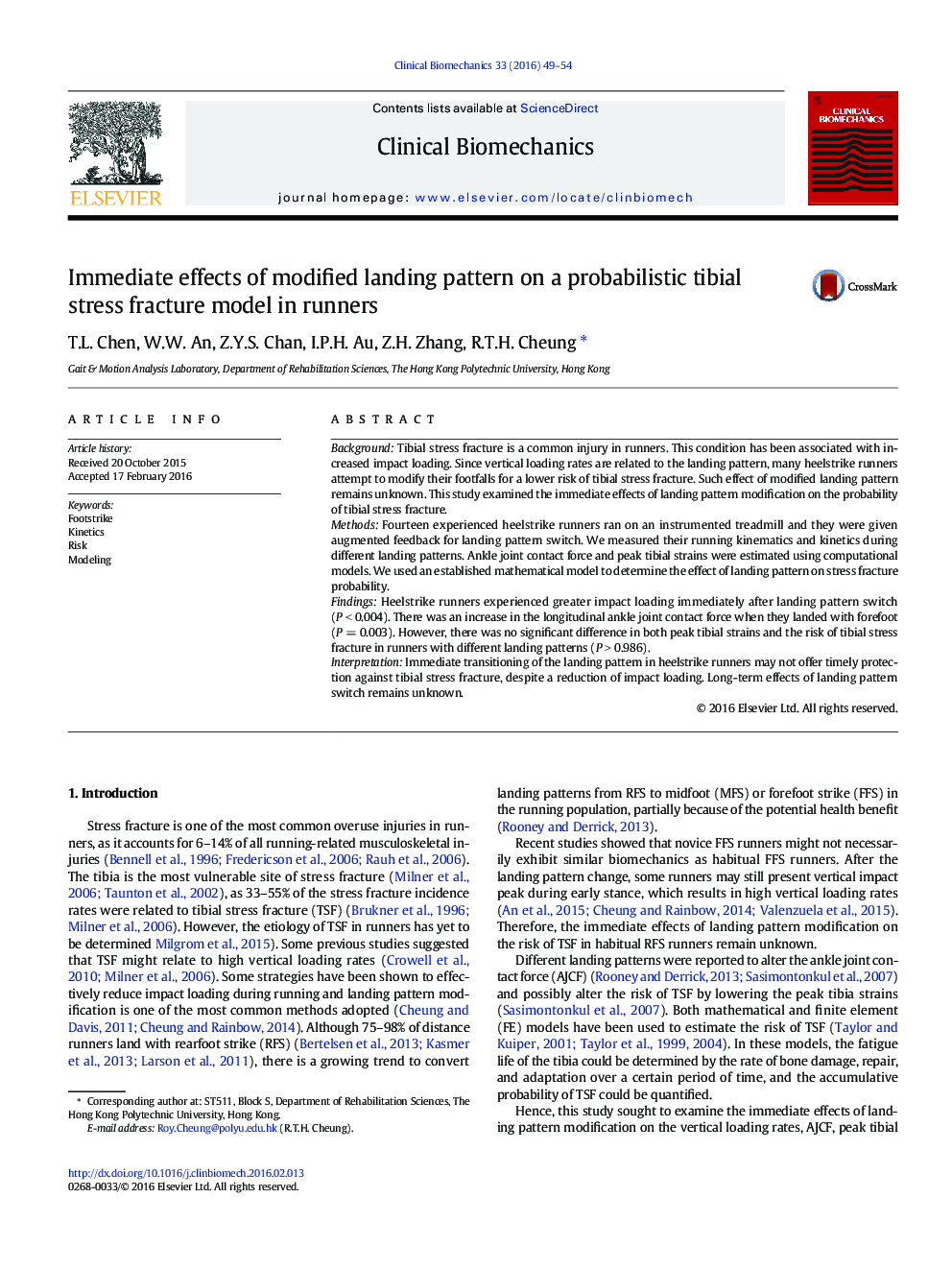| Article ID | Journal | Published Year | Pages | File Type |
|---|---|---|---|---|
| 4050131 | Clinical Biomechanics | 2016 | 6 Pages |
•Heelstrikers experience lower impact loading after landing pattern switch.•Longitudinal ankle joint contact force is increased when heelstrikers land with forefoot.•Immediate landing pattern switch does not change peak tibial strains.•Immediate landing pattern switch does not lower the risk of tibial stress fracture.
BackgroundTibial stress fracture is a common injury in runners. This condition has been associated with increased impact loading. Since vertical loading rates are related to the landing pattern, many heelstrike runners attempt to modify their footfalls for a lower risk of tibial stress fracture. Such effect of modified landing pattern remains unknown. This study examined the immediate effects of landing pattern modification on the probability of tibial stress fracture.MethodsFourteen experienced heelstrike runners ran on an instrumented treadmill and they were given augmented feedback for landing pattern switch. We measured their running kinematics and kinetics during different landing patterns. Ankle joint contact force and peak tibial strains were estimated using computational models. We used an established mathematical model to determine the effect of landing pattern on stress fracture probability.FindingsHeelstrike runners experienced greater impact loading immediately after landing pattern switch (P < 0.004). There was an increase in the longitudinal ankle joint contact force when they landed with forefoot (P = 0.003). However, there was no significant difference in both peak tibial strains and the risk of tibial stress fracture in runners with different landing patterns (P > 0.986).InterpretationImmediate transitioning of the landing pattern in heelstrike runners may not offer timely protection against tibial stress fracture, despite a reduction of impact loading. Long-term effects of landing pattern switch remains unknown.
